Choosing the perfect Oriental or Persian rug size can be a daunting task. This comprehensive guide will help you understand the common sizes, standard measurements and how to visualize and select the right rug for your space.
We’ll detail the sizing guide to ensure you have the information you need to make an informed decision.
Table of Contents
Common Sizes of Persian and Oriental Rugs
Persian and Oriental rugs, including standard rug sizes, come in the following sizes to accommodate different spaces:
Small
Medium
Large
Oversized
Ranging from 9×12 to 10×13 and up. These standard Oriental rug sizes are ideal for larger-sized living rooms, dining rooms, and bedrooms.
Runners
Narrow and long, runners are typically 2×3 ft wide and 3-4 ft wide. Lengths start from 6 feet up to 40 feet long. These woven Persian runner rugs are perfect for hallways, staircases, and corridors.
How Big Should an Oriental Rug Be in a Room?
The ideal Oriental rug size depends on the room dimensions, furniture layout, and your personal preference for an oriental rug. Generally, a rug should cover at least 60-80% of the floor area in a room, with a margin of 12-24 inches between the rug and the wall. This ensures a well-balanced and visually appealing space.
For example, in a living room, you might choose a rug that is large enough to fit under the sofa, coffee, and dining table top, and additional seating so that the furniture sits entirely on the rug. This not only creates a cohesive look but also keeps the furniture steady.
If you have a small living room, a 5×8-foot rug might be suitable, while a larger one may require a 9×12-foot rug or an even larger one. Leave 12-24 inches between the rug and the wall for an aesthetically pleasing arrangement.
What is the Rule for Persian Rug Size?
A useful rule of thumb is that the rug should be large enough for the front legs of all furniture pieces to rest on it. This creates a cohesive look and helps anchor the room. However, it’s crucial to consider the room’s dimensions, furniture layout, and design preferences when selecting the right area rug size.
Rug Size Variations
Persian rugs and Oriental rugs are not always exact in their measurements due to the following:
Handmade nature: Since they are handcrafted, slight variations in their shape and dimensions are common.
Metric system: These rugs are standardized using the metric system and converting them to feet and inches may result in slight variations.
Rug Size Based on Oriental Rug Types
Understanding that certain Persian rugs, including antique rugs, have specific sizes associated with their products can help you choose the perfect rug for your space.
Here are some examples:
Gabbeh: Traditionally smaller, Gabbeh rugs usually measure around 4×6 feet.
City or Traditional rugs: Rugs such as Tabriz, Sarouk, and Kashan offer a range of sizes, from small to oversized, including runner options.
Village Persian rugs: such as Heriz, Bakhtiari, and Malayer, can come in small, medium, and large sizes, including runner options.
Tribal Persian rugs: such as Balouchi and Qashqai rugs, typically come in a range of standard sizes of small to medium sizes. These tribal rugs are typically not available in larger sizes because tribal weavers do not have access to large rug-weaving looms.
Ways to Visualize the Rug Size in Your Home
To get a better sense of measuring just how much space a rug will fit in your space, try these methods:
Augmented Reality
Use the augmented reality feature on our website to virtually place a rug in your room.
Painters Tape Method
Some people can just look at a room and decide which rug size would go best in that space. Others need a more solid visual guide to get a better idea. If you fall into the latter category, here’s a trick that should help.
Let’s say you’ve estimated that a 9’x12′ rug would go well in that space. Using masking tape or painter’s tape, create an outline on the floor where you are planning on placing the rug
Now stand back and see if that shape looks like a good fit. Too large? Try an 8’x10′ outline and stand back and see if that looks better.
Using Multiple Persian Rugs in a Room
Incorporating multiple rugs in a room can provide several advantages:
Define separate spaces: Using different rugs can help establish distinct areas if your room has multiple functions.
Visual interest: Layering rugs with contrasting woven patterns or colors can give a dynamic and engaging look.
Flexibility: Combining smaller area rugs allows you to easily change the layout or design, giving you more decorating flexibility.
Furniture Size and Oriental Rug Size
Selecting a rug that complements your furniture size ensures a balanced and harmonious space. Consider the size of your furniture and its arrangement in the room when choosing a rug. For example, a large sectional sofa would benefit from a larger rug to provide balance and proportion.
Here's a Cheat Sheet to Help You Determine the Right Rug Sizes
Margins Between the Edge of the Rug and the Wall
Recommended margins between the edge of the carpet and the wall are typically 12-24 inches, depending on the room size. These margins project a balanced look, prevent a cramped appearance, and showcase the rug as a centerpiece.
Room-by-Room Size Guide
Consider these tips when selecting a rug for different rooms:
Living Room: Small (5x8 feet) to Large (9x12 feet)
In the living room, the rug should be large enough so that the furniture, including the sofa and coffee table, sits on it completely, ensuring stability. If you prefer not to have the furniture on the rug, measure the space accurately to place the sofa and coffee table around the rug instead.
Dining Room: Large (8x10 or 8x11 feet), Oversized (9x12 to 10x14 feet)
In the dining room, the rug should extend at least 24 inches beyond the edges of the dining room table on all sides. This ensures chairs remain on the same area rug even when pulled out for seating. Opt for a low pile to make cleaning easier and minimize the risk of snagging chair legs.
Bedroom: 8x11 to 9x12 feet (depending on bed size) or 3 small rugs/short runner rugs
In the bedroom, the rug should extend at least 24 inches beyond the sides and foot of the bed. This creates a cozy landing area for your feet when getting in and out of bed. Alternatively, you can use smaller rugs on either side of the bed or at the foot of the bed to add warmth and texture.
Hallway: Runners, typically 2.5x6 to 3x20 feet
Hallway runners protect your floors and add visual interest to an often overlooked area. Choose a runner that leaves a few inches of exposed flooring on either side and ensure it does not extend the full length of the hallway to avoid a wall-to-wall carpet effect. This will create a balanced appearance and highlight the runner’s design and length.
Entry: 3x5, 4x6 feet or 5x8 feet
An entry rug should be large enough to accommodate the door swing. Choose a durable rug that can handle foot traffic, and consider a low-pile or flat-weave design for easy cleaning.
Home Office: 6x9 feet to 9x12 feet or small/medium size rug in front of the desk
In a home office, the rug should be large enough to accommodate your desk and chair, with extra space for movement. A rug can also help reduce noise and create a comfortable environment for focus and productivity.
Remember that these recommendations serve as a starting point and may vary depending on your room dimensions and furniture layout. Use these guidelines to create a cohesive and harmonious space.
Decide on the diameter and do the masking tape method.
Round Oriental rugs can add a unique and captivating touch to your space, especially in larger rooms, with their distinct style. Here’s how to use them effectively:
Visual interest: Round rugs break up the pattern and the monotony of straight lines and angles, creating a more dynamic and stylish space.
Softening angular spaces: They work well in areas with sharp corners or irregular shapes, adding a sense of balance and softness.
Focal points: Use round rugs as a central feature, such as under a round dining table, in a foyer, or in a seating area with curved furniture, to showcase their style and create an eye-catching effect.
Conclusion
As you search for the right size, use this comprehensive guide to help you make the best choice for your home, and don’t hesitate to reach out for personalized assistance. With various sizes, patterns, and vintage styles available at our shop, you will find the perfect rug to elevate your interior design.
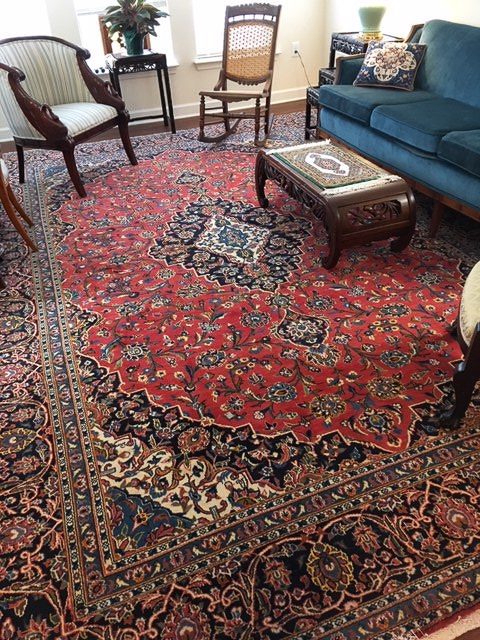
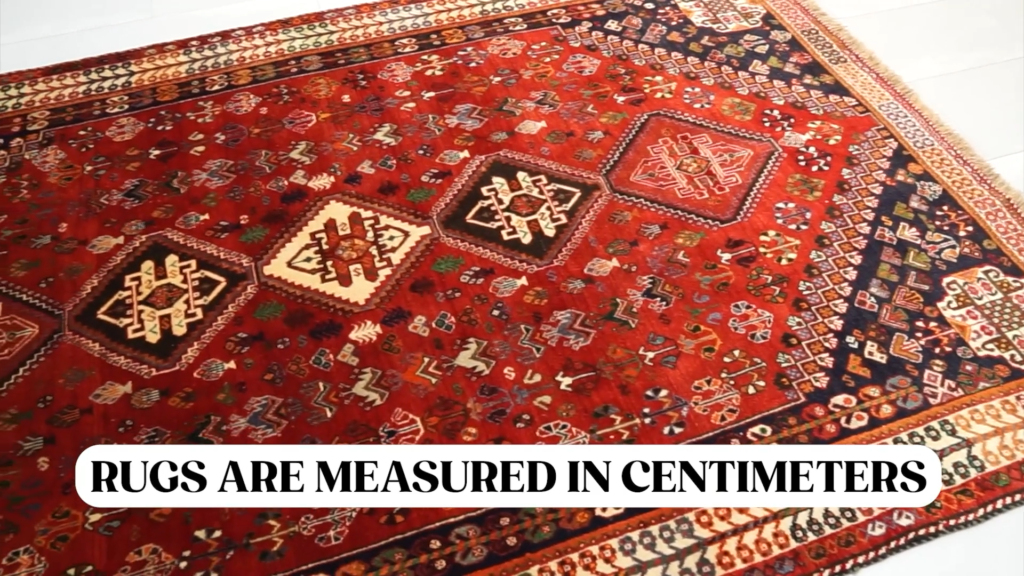


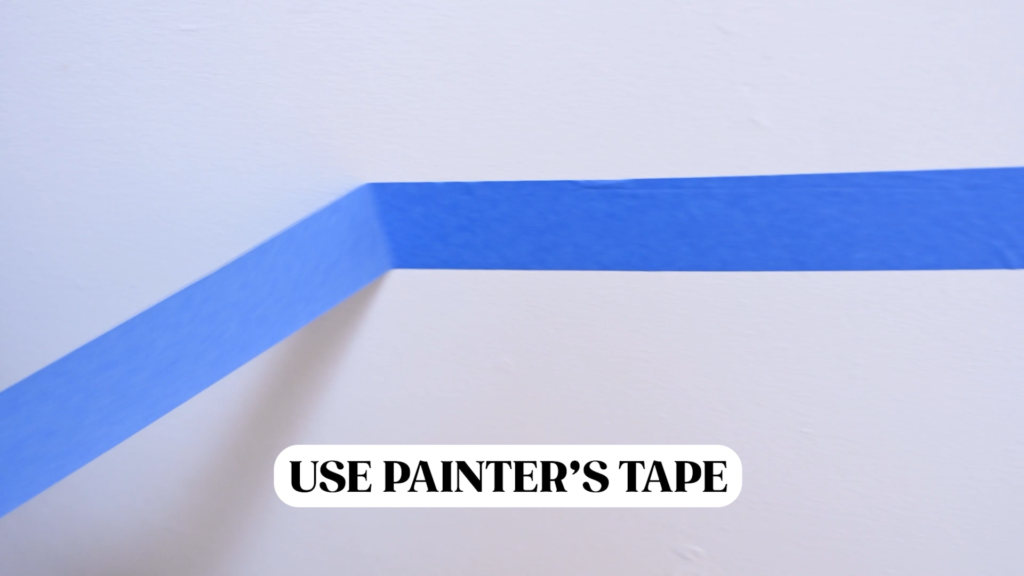
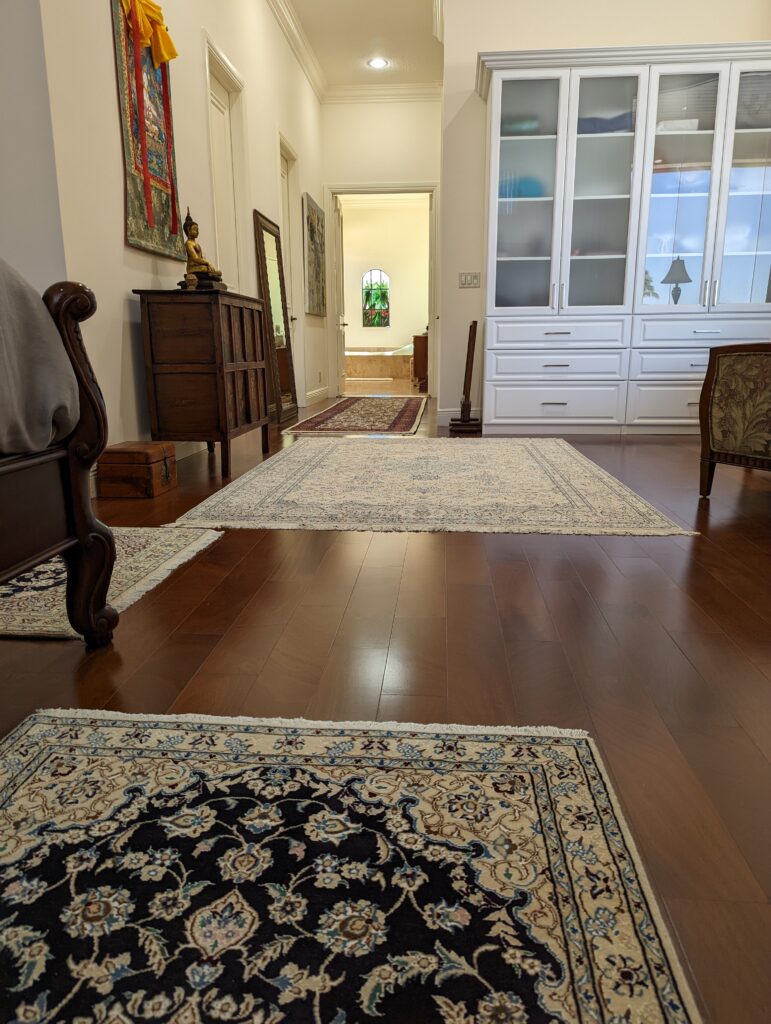
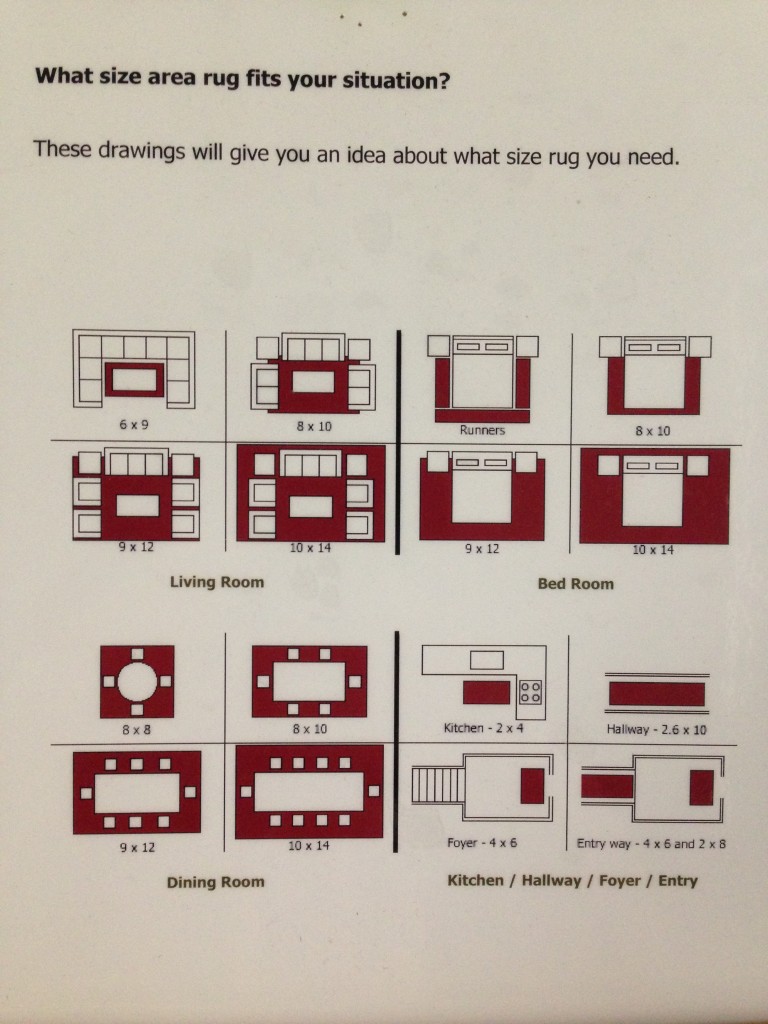
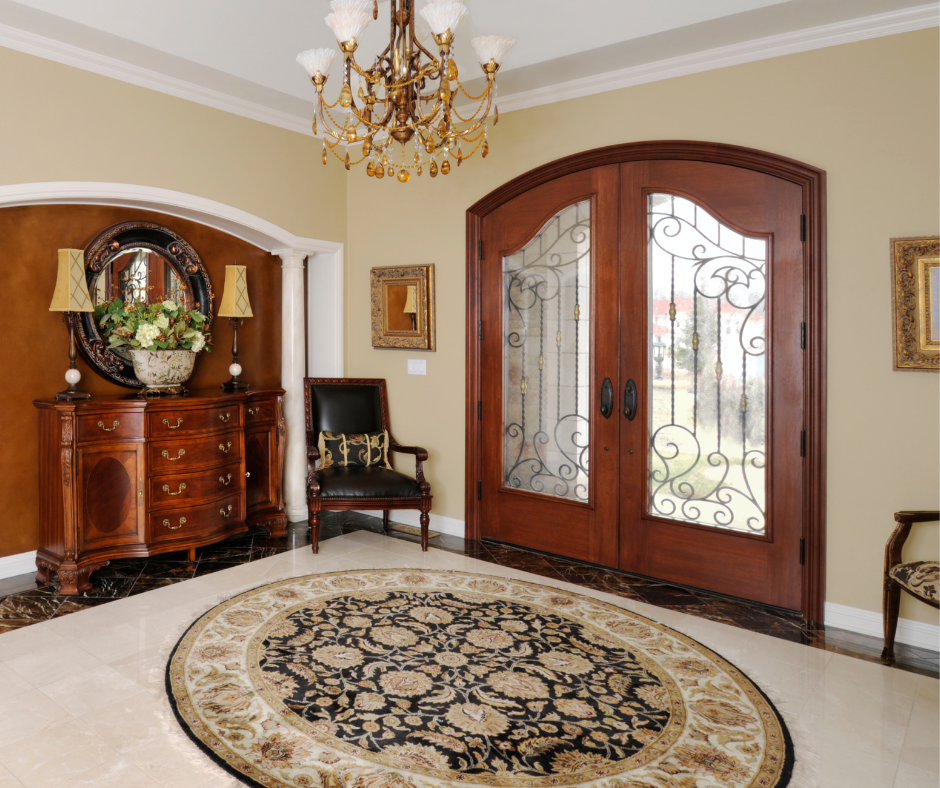
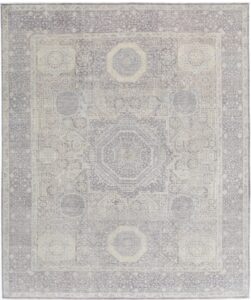
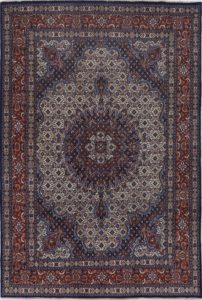
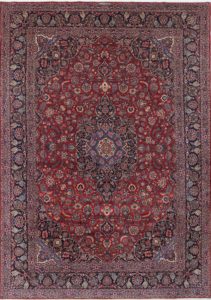
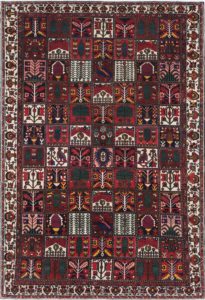
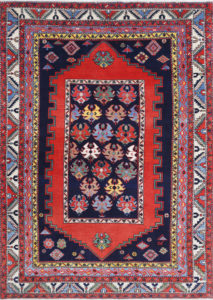


One thought on “Oriental Rug Size Guide Including Rug Size Cheat Sheet”
I am working through your recommendations. Masking tape indicates a 9 x 12